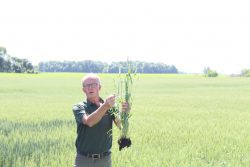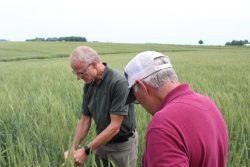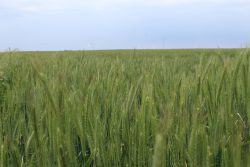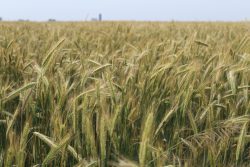Hybrid Rye Varieties Shine in 2019 Iowa Trials
by Chaunce Stanton Marketing Manager
Iowa State University and Practical Farmers of Iowa released the results of a three-location trial that included six varieties of cereal rye, two of which were hybrid rye varieties.
Long story short: The two hybrid rye varieties were the top-yielding performers at all three locations with more yield, slightly higher test weight, and considerably less lodging.
About the 2019 Cereal Rye Variety Trial in Iowa
Noting a lack of data on cereal rye performance specific to Iowa, Practical Farmers of Iowa (PFI) worked with Iowa State University (ISU) to trial six different cereal rye varieties in three Iowa locations.
- The three Iowa locations were Charles City, Kanawha, and Nashua.
- The six rye varieties included four open-pollinated varieties (Aroostook, Elbon, Hazlet, and ND Dylan) and two hybrid rye varieties (KWS Bono and KWS Brasetto).
- Planting dates ranged from October 24 – to October 26, 2018 with all locations planting to a depth of 1.25 inches with a seeding rate of 23 seeds per square foot.
- No herbicide, insecticide or fungicide were applied on any of the cereal rye plots as any location.
- Disclosure: Albert Lea Seed in cooperation with the Walton Family Foundation provided funding for the 2019 cereal rye variety trial.
For more specifics on methodology and per-location results, please download the Cereal Rye Variety Trial 2019 PDF from Practical Farmers of Iowa.
Three-Location Average Results for Cereal Rye
The table below represents an average of data from across the three trial locations. The cereal rye varieties in the table are listed in order of yield in bushels per acre, from highest to lowest.
- Yield: Clearly, the hybrid rye varieties outyielded the non-hybrids by more than double.
- Test Weight: Test weight is the number of pounds per bushel of grain. Both hybrid rye varieties produced comparable test weights to the non-hybrids, and, on average, the hybrid varieties produced a slightly higher test weight compared to the four non-hybrid varieties.
- Lodging & Plant Height: The average lodging percentage was remarkably lower in the two hybrid rye varieties, which may, in part, be due to their height. On average, the hybrid rye varieties were 23 percent shorter than the non-hybrid varieties.
What is Hybrid Rye?
Originally developed in Europe, hybrid rye has been available in the U.S. for about five years as both grain-specific and forage-specific varieties. True hybrids, these rye varieties typically outyield both their open-pollinated grain and forage-type counterparts.
Hybrid rye sheds its pollen much more quickly than its open-pollinated cereal rye counterparts. That means pollination occurs across an entire field within a matter of hours, rather than days. This fast and even level of pollination significantly reduces the chance for ergot infection, which decreases the chances that a grain load would be rejected by grain buyers or preclude it being fed to livestock.
In addition, they are shorter and more uniform in height; have larger root systems, which improves performance in low moisture conditions; stand better; have better disease tolerance and they mature more uniformly than open-pollinated varieties.
REFERENCES
All data in this post comes from Practical Farmers of Iowa’s page: Cereal Rye Variety Trial 2019, which was published November 19, 2019.












